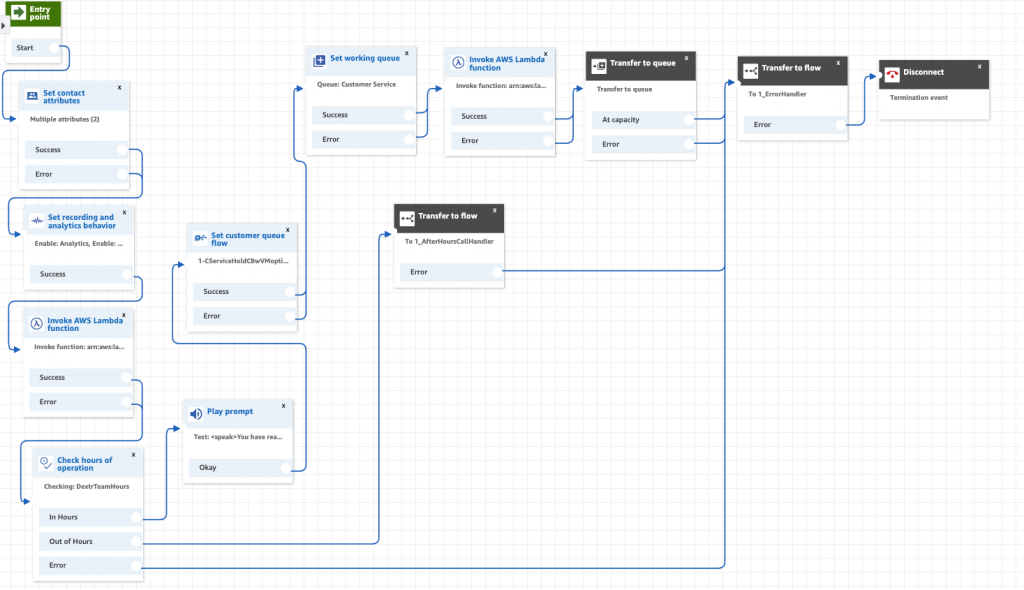[breadcrumb]

When to Transfer to Flow and Why?
A typical call flow might have a caller reach an IVR Call Tree that offers options to reach different departments and workgroups in your company. "Thank you for calling, Press 1 for Sales, Press 2 for Customer Service and Press 3 for Administration" as boring as it might sound, is a typical call tree self navigation audio instruction prompt. Let's assume the caller presses 1 for sales, do you "transfer to flow" or "transfer to queue"?Transfer to Flow?
A flow enables you to string together a number of setup options that customize the callers experience and enable different call handling options. For example, you may want to reset LENS, change recording behavior, change voicing, set contact attributes and set the queue hold flow. These options would not be available if your set the working queue and then transfer to queue from the main IVR menu, robbing you of the opportunity to establish a unique caller experience.